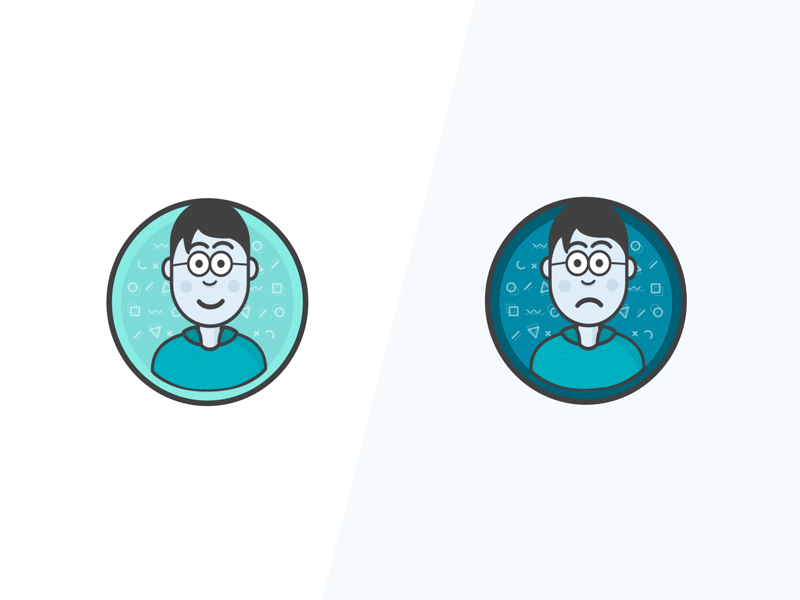While predicting the future is often a risky game, there is a list of hot topics being discussed in the digital industry right now, and when considered from a User Experience perspective they can turn ‘nice to have’ technologies and tools into something meaningful and valuable for the user.
1. The Latest Tech
Last year, the ‘buzz’ was all about Artificial Intelligence (AI), Voice Interfaces and the resurgence of Augmented Reality. Before that it was all about chatbots and the Internet of Things (IOT).
So what mind-blowing, disrupting technology can we look forward to in 2019?
You might be surprised to hear that 2019 will NOT bring any new tech to the table.
So if 2019 is denied the usual ‘obsessiveness over the new, latest wonder’ then it’s likely going to be remembered as the year that the industry learns how to make all the previously hyped tech work effectively for the masses.
As you may already be aware…
– Chatbots continue to fail
– The internet of things has gone mainstream in only a few instances
– AI, although starting to be usefully implemented, only a few companies are incorporating AI into mainstream products.
– Voice interfaces remain limited and may even need a new generation of users before they are intuitive enough to be useful.
2019 will be a year dedicated to gaining a deeper understanding of the how, when and why for new technologies, which is going to be vital in order to successfully implement them into our daily lives. Ensuring each one is not just relevant for the user, but is also meaningful, calm and sustainable.
Above all, these technologies must enrich the user’s experience, not hinder, obstruct or over-complicate it. It’s only through user research that the companies implementing these solutions will fully understand how to fix what fails to meet users’ expectations.
2. Users’ digital wellbeing
In 2019 there will be increasing demand from users for healthier, calmer experiences when engaging, and more importantly, not engaging with digital content.
Apple, Google, YouTube, Facebook and Instagram led the way in 2018, and in 2019 more companies will see an ever increasing resistance from users against irresponsible, engineered design patterns aimed at boosting user engagement to the extreme.
Addictive digital behaviour
Now a potent public health topic, users are starting to feel the effects and deal with the consequences of obsessive digital usage. Whether it’s Facebook supposedly being responsible for 33% of recent divorces or the purposeful addictiveness of products like Tinder or Instagram, society is waking up, recognising the issue and acting. The large players have, and are, feeling the backlash from users as engagement levels have dropped in protest and 2019 will see this trend filter down into the corporate dominated marketplaces.
In an environment of ever-vibrating smartphones, notifications, emails and increasingly demanding apps, 2019 will be mindful of occasions when the users are not interacting with digital products.
Already good work is being done and relatively small changes have been shown to be incredibly powerful in their societal impact. For example…
– Google mail services allow users to snooze emails for later viewing
– Bumble allows users to pause dating to take time out
– Instagram detects excessive feed scrolling and notifies users
In 2019, UX designers will be at the forefront of correcting ‘dark engagement patterns’ and understanding, through research-based user insights, acceptable types and levels of engagement.
Evolution of Metrics
Importantly metrics need to move on from ‘last century’ page views, visits and dwell time. Instead of striving to attain attention and popularity, successful digital products in the future will be those delivering experiences that are relevant, timely and comfortable.
As a result of the inevitable general decrease in engagement demanded by a healthy society, 2019 is likely to see the beginning in a shift of KPI’s being measured in affinity-related metrics rather than engagement-centred ones. Success will be seen through users achieving their own goals and through it a company’s good reputation, usefulness and social responsibility will be recognised.
3. Device-agnostic user journeys
A huge growth area in 2019 will be the increasing development of device-agnostic experiences.
As users gain access to an ever larger inventory of devices, smartphone, smartwatch, laptop, tablet, smart speaker, etc, their expectation for a seamless experience across all their devices is desired.
Interactions can no longer be conceived and designed based around siloed, single-device solutions, in 2019 cross-device experiences will take centre stage. A user’s goal, whether booking a holiday, ordering a taxis, or even purchasing a product, is increasingly expected by users to be achievable across all their devices.
For example:
Uber travellers are able to initiate their journey through a voice-command to their home smart speaker and finish their trip on their iOS or Android phone. The user sees the digital journey as one seamless interaction.
4. Navigational interfaces
What about the ever-evolving navigational interface?
Yes, it is set for a shakeup in 2019.
Hamburger menu
Last year saw a number of companies opting to remove the hamburger menu and switch to tab-based menus following research from large platforms. Spotify and YouTube both removed their hamburger menus and saw navigation usage jump 30%.
Sticky nav
The adoption of sticky navigation, used for efficiency and ease of use, is becoming more prominent. Tab-based menus seem to be favoured with elements at the top, bottom or sides of the page.
The long debate on top vs bottom placement for mobile navigation is likely to be put-to-bed in 2019 in favour of the latter, following research indicating users prefer using their mobile device single-handed with their thumb above all other digits. Obviously to achieve this, especially on larger screens, requires the interactions to take place at the bottom of the screen, leaving the remaining top portion of the screen available for unobtrusive viewing of prime content.
Design for foldable screens
An exciting development that we saw back in 2018 was the reality of foldable smartphone screens. As manufacturers begin to implement these screens into their products, UX designers will need to rise to a new challenge and discover how to provide great users experience with multi-view tech.
5. Gestures
Gesture-based interactions grew significantly with the launch of Apple’s iPhone X in 2017, the first buttonless phone, swiftly followed by Google. The main reason for the introduction of gesture-based navigation was the tempting opportunity to save screen space for the apps. Unfortunately, the hidden nature of these controls and a lack of consistency across device manufacturers has led to users feeling confused, apprehensive and ultimately has resulted in poor user experiences.
However, 2019 is still likely to see increased growth in ‘gesture navigation’ on mobile apps and websites – perhaps with the implementation of gesture-only solutions fuelled by users becoming increasingly more familiar and comfortable with gestures. In an effort to improve usability, the industry needs to really get to grips with the standardisation of gestures and interaction patterns, such as animated hints that prompt and educate users about how gestures can be used, should be implemented more often.
6. Biometric signups and sign-ins
Biometrics, although not new, are really starting to mature as a technology, as the devices it relies on become more accessible and the data captured is treated in a more joined up fashion. 50% of smartphone users already user their fingerprints to unlock their phones daily and this is only the start of the replacement of password and perhaps, in the near future, PINs.
In 2019, we will see more use of the technology, on both smartphones and even on web browsers for user authentication and identity management.
With the addition of iris scanning, voice and facial recognition and vein pattern authentication, the security capabilities offered by this technology, to users and businesses, will open up exciting and time saving opportunities – especially in the FinTech sector.
7. Augmented Reality (AR)
With over 13 million installations of apps developed with Apple’s ARKit platform and Google having released their competing platform ARCore, AR is certainly gaining momentum. However, nearly half all of the installs from ARKit are used for still gaming and yet augmented reality has so many potential uses in sectors such as retail, education and medicine.
Facebook Founder, Mark Zuckerberg is just one of the industry insiders predicting that screens will eventually be replaced by lenses to create what he calls “the ultimate AR experience.”
So, will 2019 be the year when AR fulfils its commercial potential and goes beyond the world of gaming?
Finally
So, while the topics listed above aren’t particularly new, it is the User Experience-based design approaches which will transform these technologies. Understanding the users , their needs, wants and expectations through research will fix the problems, uncover opportunities and ultimately drive the digital industry forward in 2019.
Author Bio



